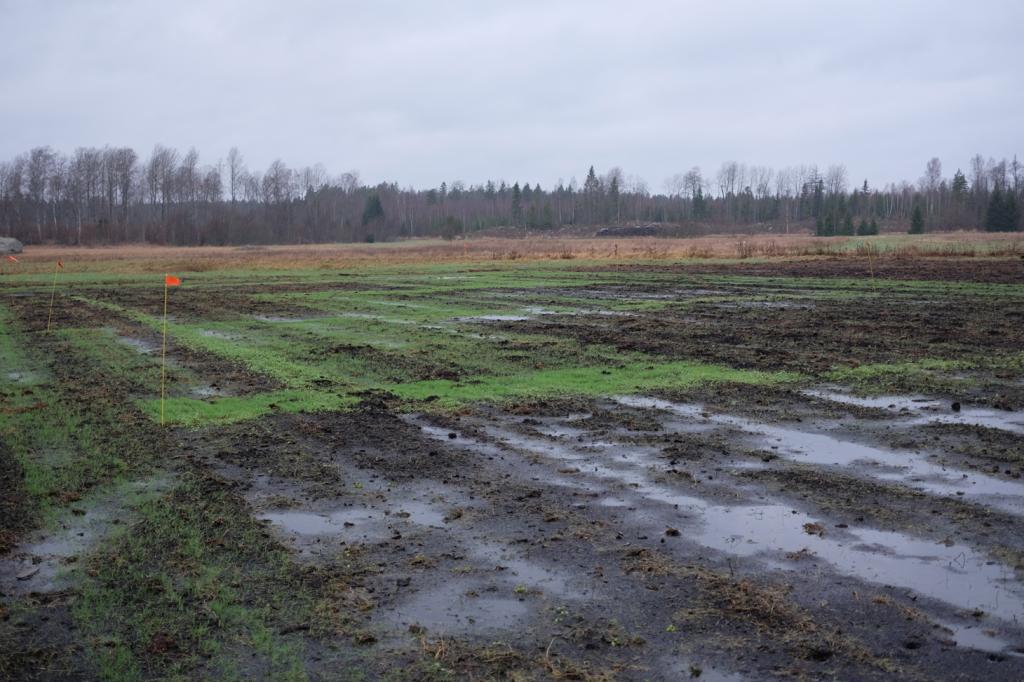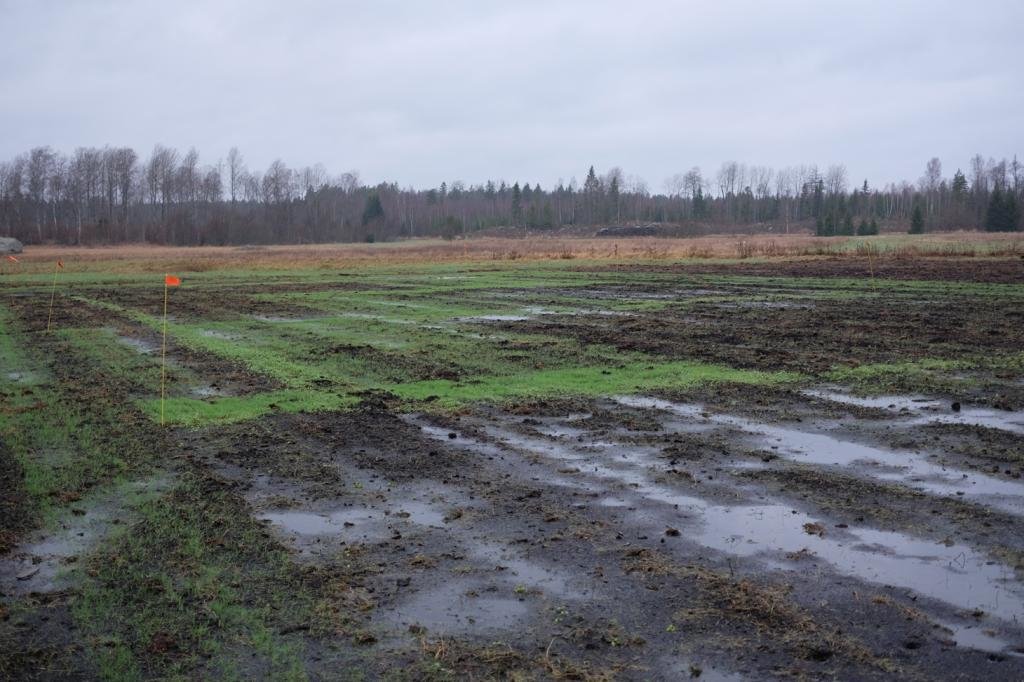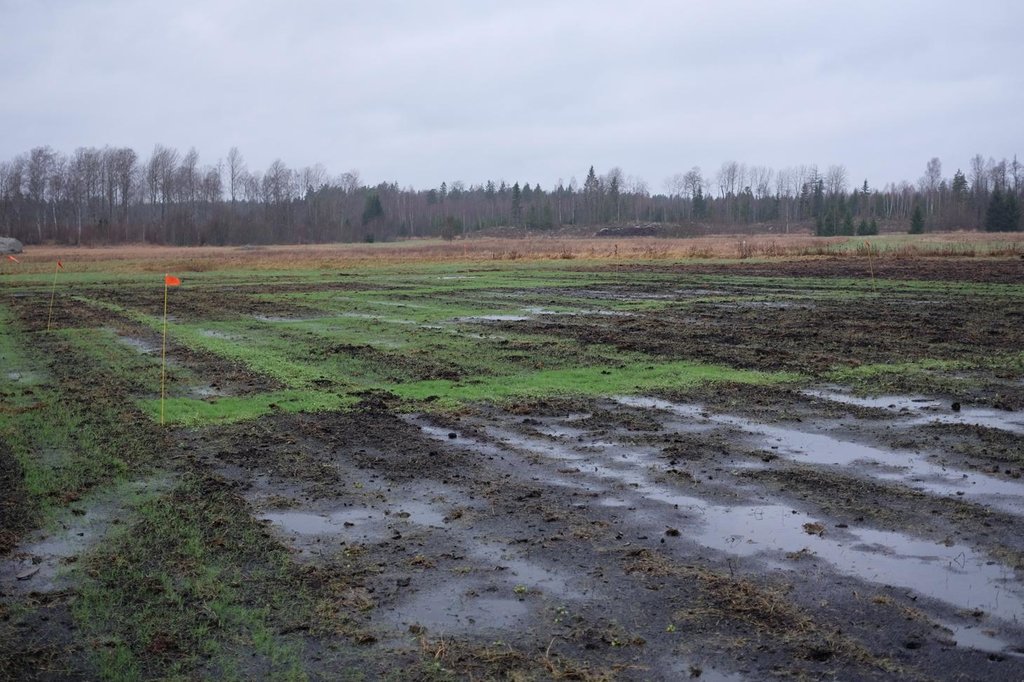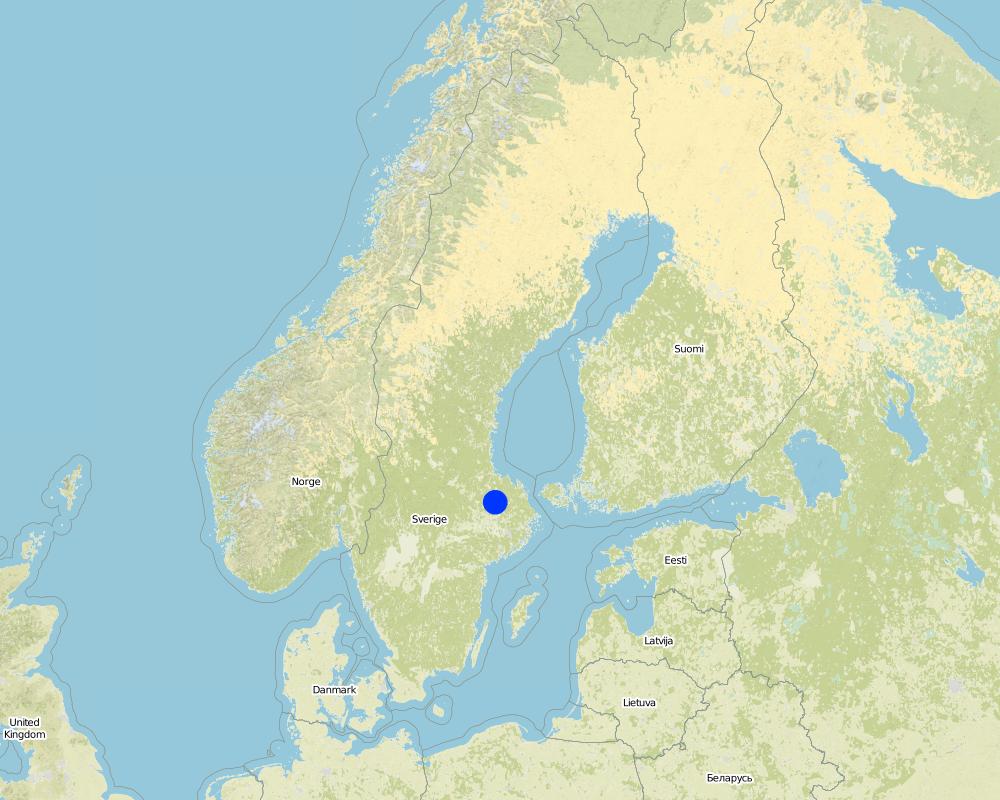Using water tolerant crops on cultivated peat soils, Recare [瑞典]
- 创建:
- 更新:
- 编制者: Örjan Berglund
- 编辑者: –
- 审查者: David Streiff
Grödval på odlade torvjordar
approaches_2667 - 瑞典
查看章节
全部展开 全部收起1. 一般信息
1.2 参与方法评估和文件编制的资源人员和机构的联系方式
有助于对方法进行记录/评估的项目名称(如相关)
Preventing and Remediating degradation of soils in Europe through Land Care (EU-RECARE )有助于对方法进行记录/评估的机构名称(如相关)
Swedish Univ. of Agr.Sciences (Swedish Univ. of Agr.Sciences) - 瑞典1.3 关于使用通过WOCAT记录的数据的条件
(现场)数据是什么时候汇编的?:
15/10/2015
编制者和关键资源人员接受有关使用通过WOCAT记录数据的条件。:
是
2. SLM方法的描述
2.1 该方法的简要说明
Using water tolerant crops might prolong the use of cultivated peat soils.
2.2 该方法的详细说明
该方法的详细说明:
Aims / objectives: To find crops that have a high yield even though the ground water level is high.
Methods: Compare Reed canary grass and Tall fescue with Timothy that normally is grown within this area.
2.3 该方法的照片
2.5 采用该方法的国家/地区/地点
国家:
瑞典
区域/州/省:
Uppsala län
有关地点的进一步说明:
uppsala
注释:
Field trial, 12 plots times 72 m2
Map
×2.6 该方法的开始和终止日期
注明开始年份:
2014
终止年份(若不再采用该方法):
2019
2.7 方法的类型
- 基于项目/方案
2.8 该方法的主要目的/目标
The Approach focused on SLM only
To find crops with high yield that can be grown on peat soils with high ground water table and low bearing capacity.
The SLM Approach addressed the following problems: To find an alternative use of these lands to postpone abandonment.
2.9 推动或妨碍实施本办法所适用的技术的条件
社会/文化/宗教规范和价值观
- 阻碍
What other crop to choose?
Treatment through the SLM Approach: Talking to the farmers to find crops they were interested in testing.
财务资源和服务的可用性/可得性
- 阻碍
What to do with the new crop?
Treatment through the SLM Approach: Develop a local system that could use the crop for energy production or biogas production.
法律框架(土地使用权、土地和水使用权)
- 启动
The existing land ownership, land use rights / water rights greatly helped the approach implementation: Private farms can themself deside what crops to grow.
3. 相关利益相关者的参与和角色
3.1 该方法涉及的利益相关者及其职责
- 当地土地使用者/当地社区
not implemented, Field trial.
- SLM专家/农业顾问
- 国家政府(规划者、决策者)
3.2 当地土地使用者/当地社区参与该方法的不同阶段
| 当地土地使用者/当地社区的参与 | 指定参与人员并描述活动 | |
|---|---|---|
| 启动/动机 | 被动 | |
| 计划 | 互动 | |
| 实施 | 互动 | |
| 监测/评估 | 被动 | |
| Research | 无 |
3.4 有关SLM技术选择的决策
具体说明谁有权决定选择要实施的技术:
- 主要是SLM专家,咨询土地使用者之后
解释:
Land user came with suggestions of what crops to try, and we had our own idea of what crop to test. And we choose one from the land user and one crop from SLM
Decisions on the method of implementing the SLM Technology were made by mainly by SLM specialists with consultation of land users
4. 技术支持、能力建设和知识管理
4.1 能力建设/培训
是否为土地使用者/其他利益相关者提供培训?:
是
- Not relevant, This is a field trial,
4.2 咨询服务
土地使用者有权使用咨询服务吗?:
是
说明/注释:
This is a field trial. We are in the process of evaluating this.
4.3 机构强化(组织发展)
是否通过这种方法建立或加强了机构?:
- 否
4.4 监测和评估
监测和评估是该方法的一部分吗?:
是
注释:
bio-physical aspects were regular monitored by project staff through observations; indicators: None
bio-physical aspects were regular monitored by project staff through measurements; indicators: None
economic / production aspects were regular monitored by project staff through observations; indicators: None
economic / production aspects were regular monitored by project staff through measurements; indicators: None
area treated aspects were regular monitored by project staff through observations; indicators: None
management of Approach aspects were regular monitored by project staff through observations; indicators: None
management of Approach aspects were regular monitored by project staff through measurements; indicators: None
There were no changes in the Approach as a result of monitoring and evaluation: None
There were no changes in the Technology as a result of monitoring and evaluation: None
4.5 研究
研究是该方法的一部分吗?
是
- Agronomic, Soil Science
提供进一步的细节,并指出是谁做的研究:
Research is ongoing by SLU and not evaluated yet.
Research was carried out on-farm
5. 融资和外部物质支持
5.1 该方法中SLM组成部分的年度预算
注释(例如主要的资助来源/主要捐助者):
Approach costs were met by the following donors: international (Recare Project): 75.0%; government (Swedish University of Agricultural Sciences): 25.0%
5.2 为土地使用者提供财政/物质支援
土地使用者是否获得实施该技术的财政/物质支持?:
否
5.4 信用
是否根据SLM活动的方法给予信用值?:
否
6. 影响分析和结论性陈述
6.1 方法的影响
该方法是否帮助土地使用者实施和维护SLM技术?:
- 否
- 是,很少
- 是,中等
- 是,支持力度很大
This is what we are going to evaluate during the project.
6.2 土地使用者实施SLM的主要动机
- 增加生产
Without new water tolerant crops to grow, the land is abandoned.
- 增加利润(能力),提高成本效益比
- 美学改进
A cultivated field is much nicer to look at then abandoned fields.
6.3 方法活动的可持续性
土地使用者能否维持通过该方法实施的措施(无外部支持的情况下)?:
- 是
6.4 该方法的长处/优点
| 土地使用者眼中的长处/优势/机会 |
|---|
| It is easy to implement. The farmer already have all machines and equipments. |
| 编制者或其他关键资源人员认为的长处/优势/机会 |
|---|
| It is easy to implement. The farmer already have all machines and equipments. |
6.5 该方法的弱点/缺点以及克服它们的方法
| 土地使用者认为的弱点/缺点/风险 | 如何克服它们? |
|---|---|
| Maybe it will be hard to sell the crop with a profit. |
| 编制者或其他关键资源人员认为的弱点/缺点/风险 | 如何克服它们? |
|---|---|
| It might not be a crop that has a high demand. |
7. 参考和链接
7.1 方法/信息来源
- 实地考察、实地调查
链接和模块
全部展开 全部收起链接
无链接
模块
无模块





